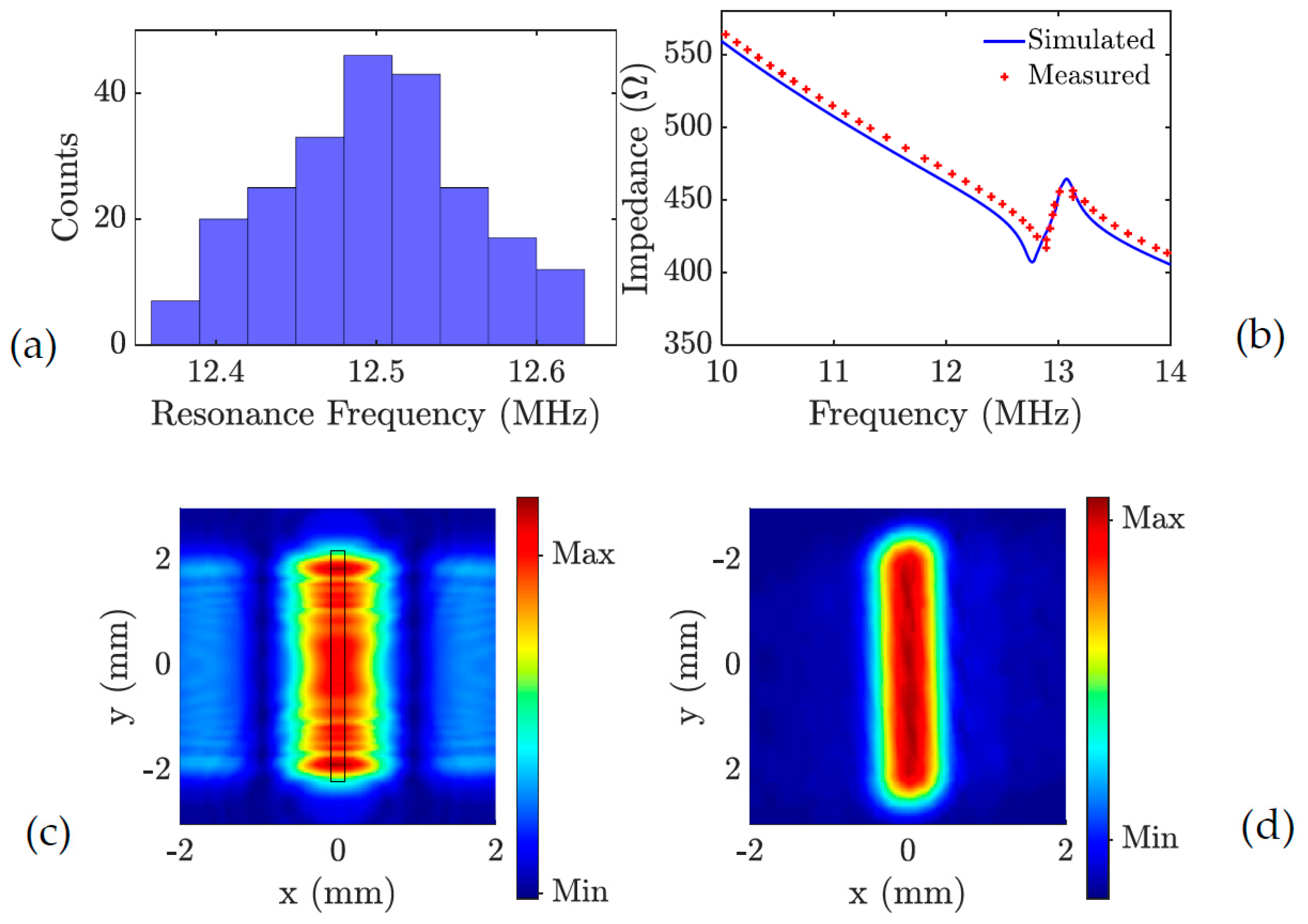Efficient Modeling of Piezoelectric Micromachined Ultrasonic Transducers Using a Combination of Finite and Lumped Element Modeling †
Abstract
1. Introduction
2. Materials and Methods
2.1. Single Transducer in Air
2.2. PMUT Cell
Author Contributions
Funding
Institutional Review Board Statement
Informed Consent Statement
Data Availability Statement
Conflicts of Interest
References
- Pala, S.; Lin, L. An Improved Lumped Element Model for Circular-Shape PMUTs. IEEE Open J. Ultrason. Ferroelectr. Freq. Control 2022, 2, 83–95. [Google Scholar] [CrossRef]
- Oguz, H.K.; Atalar, A.; Koymen, H. Equivalent Circuit-Based Analysis of CMUT Cell Dynamics in Arrays. IEEE Open J. Ultrason. Ferroelectr. Freq. Control 2013, 60, 1016–1024. [Google Scholar] [CrossRef] [PubMed]

Disclaimer/Publisher’s Note: The statements, opinions and data contained in all publications are solely those of the individual author(s) and contributor(s) and not of MDPI and/or the editor(s). MDPI and/or the editor(s) disclaim responsibility for any injury to people or property resulting from any ideas, methods, instructions or products referred to in the content. |
© 2024 by the authors. Licensee MDPI, Basel, Switzerland. This article is an open access article distributed under the terms and conditions of the Creative Commons Attribution (CC BY) license (https://creativecommons.org/licenses/by/4.0/).
Share and Cite
Liechti, R.; Blard, F.; Chatroux, J.-R.; Bastien, J.-C.; Lhermet, H.; Fain, B. Efficient Modeling of Piezoelectric Micromachined Ultrasonic Transducers Using a Combination of Finite and Lumped Element Modeling. Proceedings 2024, 97, 60. https://doi.org/10.3390/proceedings2024097060
Liechti R, Blard F, Chatroux J-R, Bastien J-C, Lhermet H, Fain B. Efficient Modeling of Piezoelectric Micromachined Ultrasonic Transducers Using a Combination of Finite and Lumped Element Modeling. Proceedings. 2024; 97(1):60. https://doi.org/10.3390/proceedings2024097060
Chicago/Turabian StyleLiechti, Romain, Francois Blard, Jean-Rémi Chatroux, Jean-Claude Bastien, Hélène Lhermet, and Bruno Fain. 2024. "Efficient Modeling of Piezoelectric Micromachined Ultrasonic Transducers Using a Combination of Finite and Lumped Element Modeling" Proceedings 97, no. 1: 60. https://doi.org/10.3390/proceedings2024097060
APA StyleLiechti, R., Blard, F., Chatroux, J.-R., Bastien, J.-C., Lhermet, H., & Fain, B. (2024). Efficient Modeling of Piezoelectric Micromachined Ultrasonic Transducers Using a Combination of Finite and Lumped Element Modeling. Proceedings, 97(1), 60. https://doi.org/10.3390/proceedings2024097060





